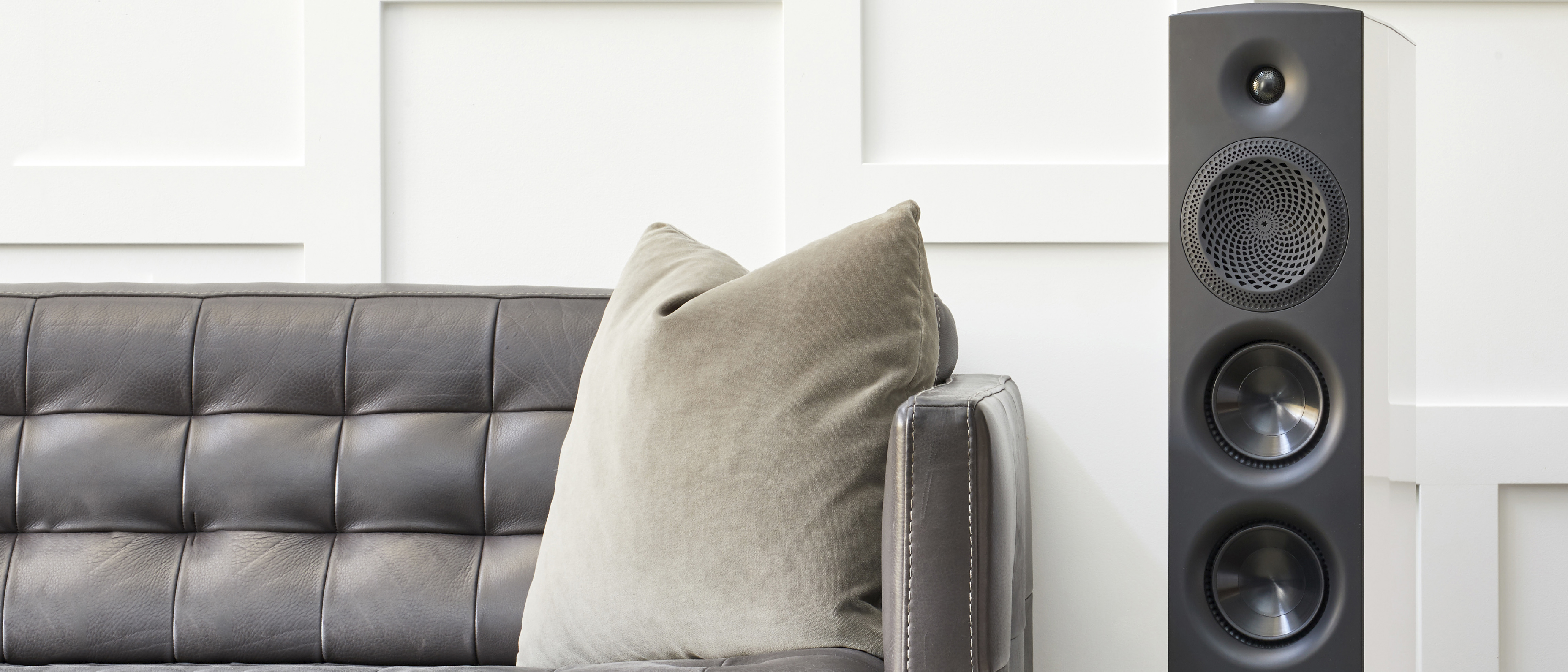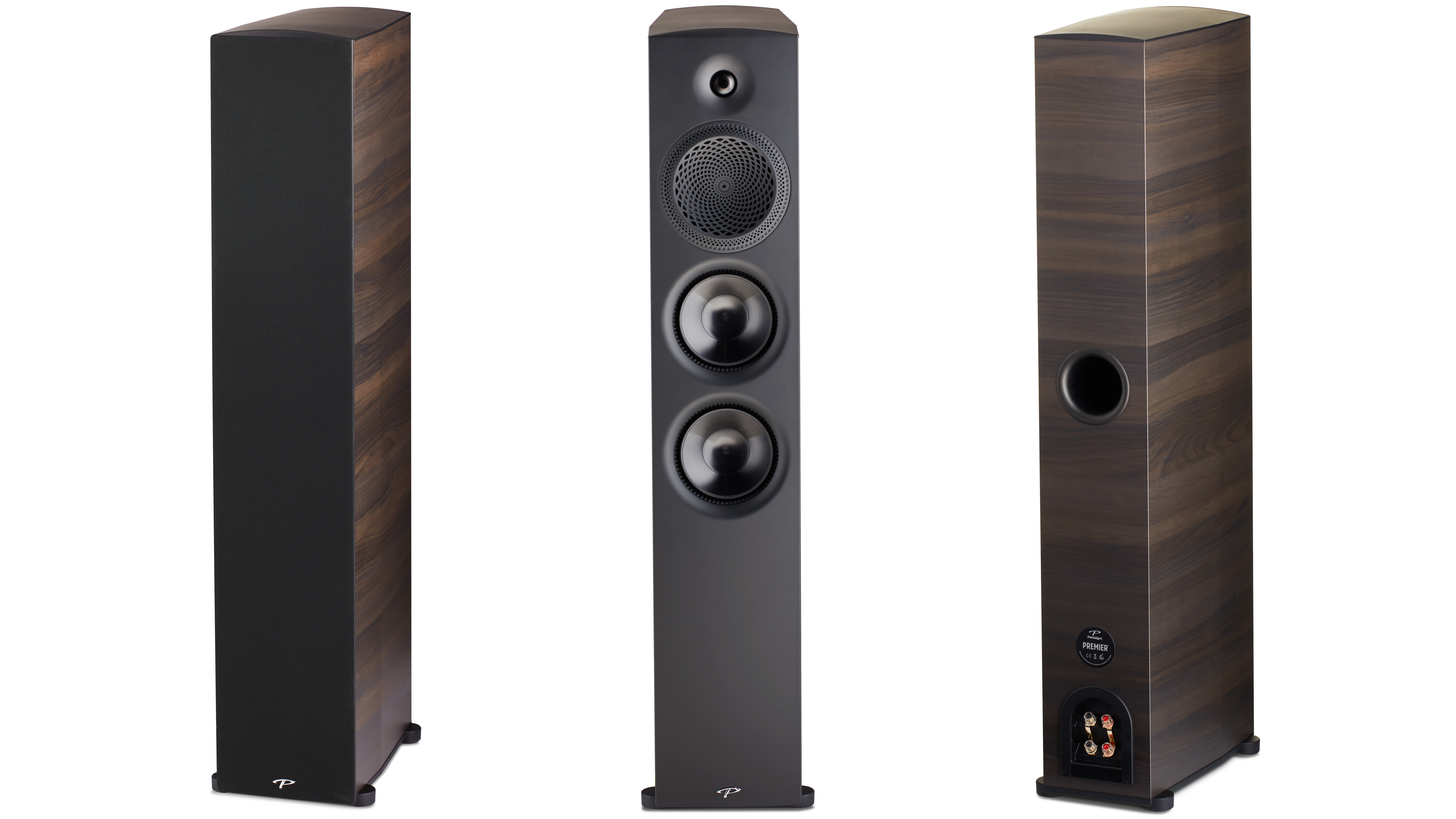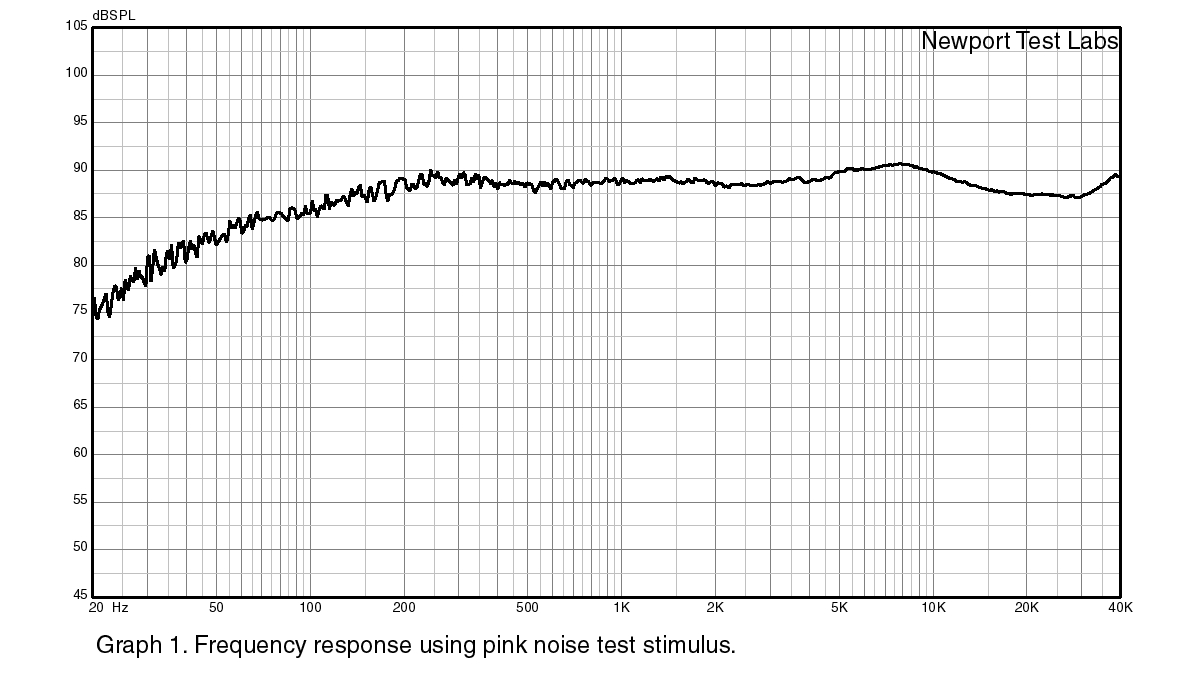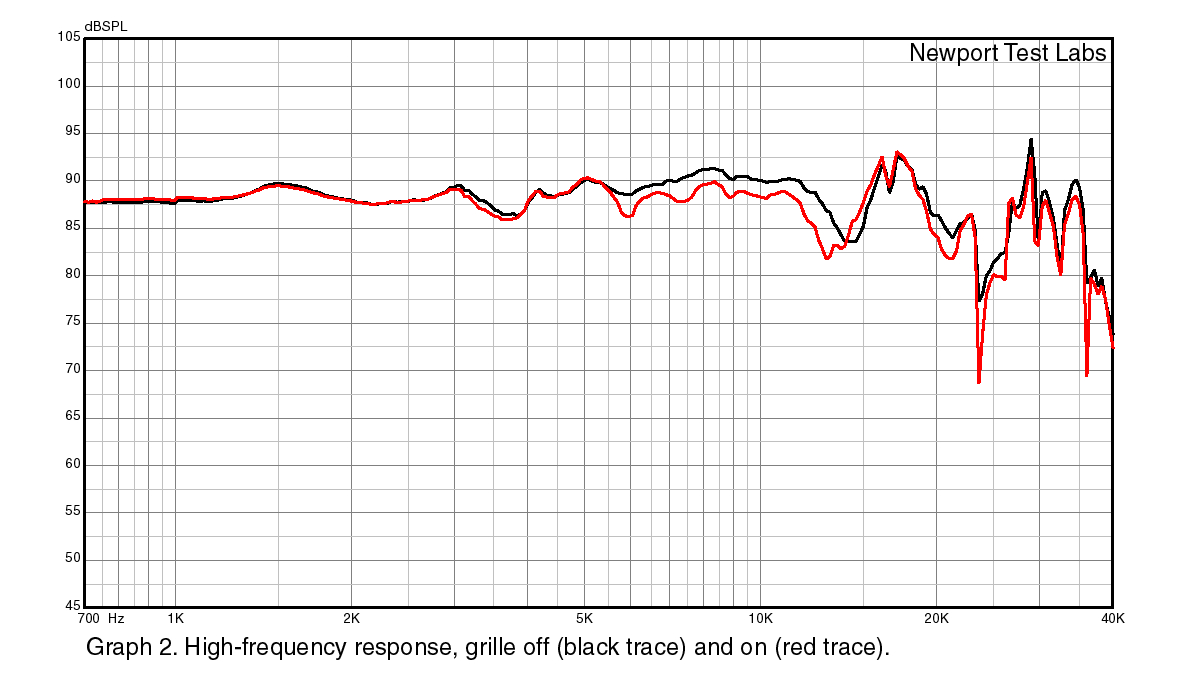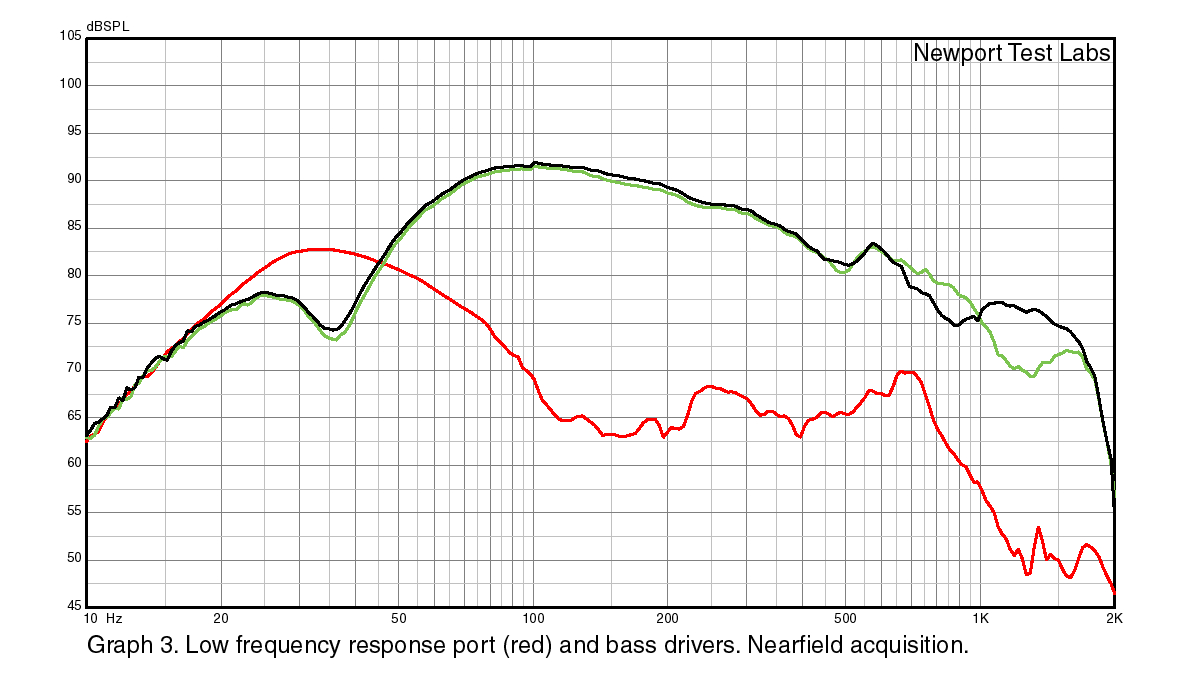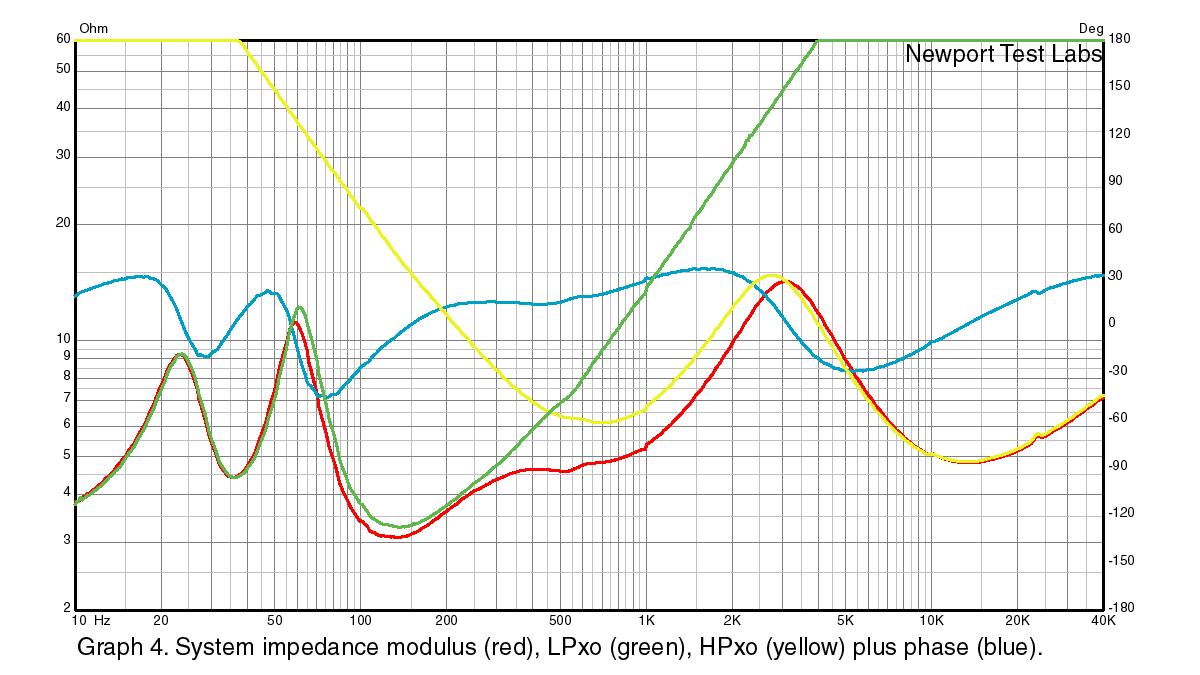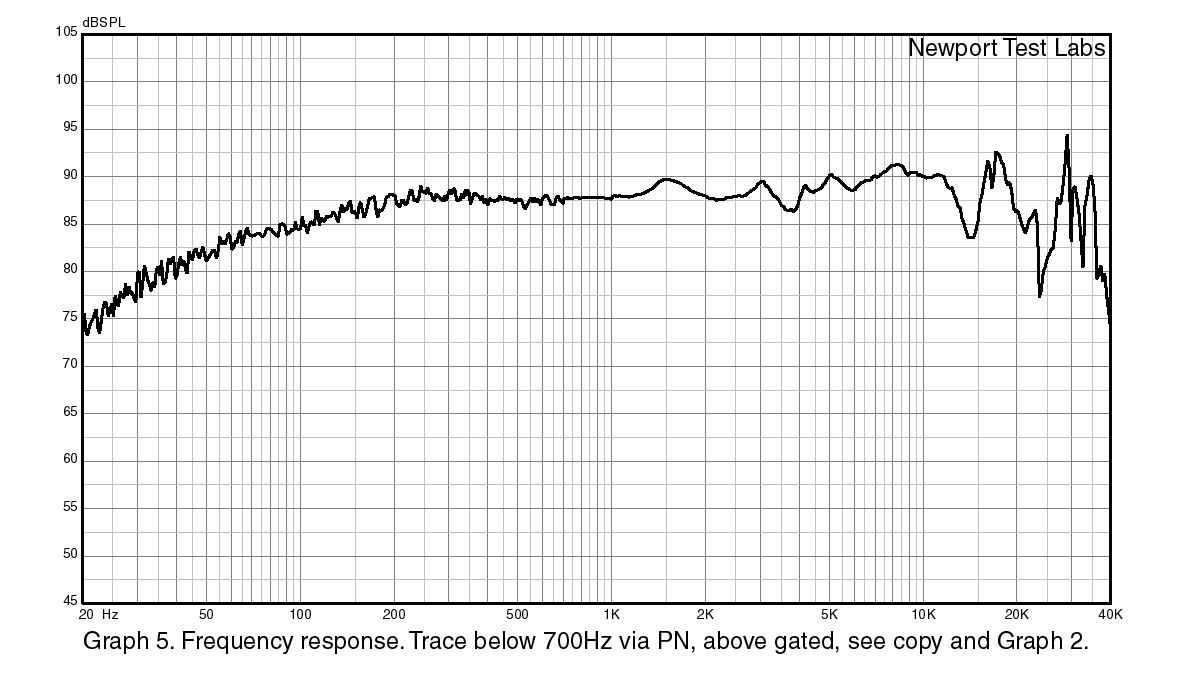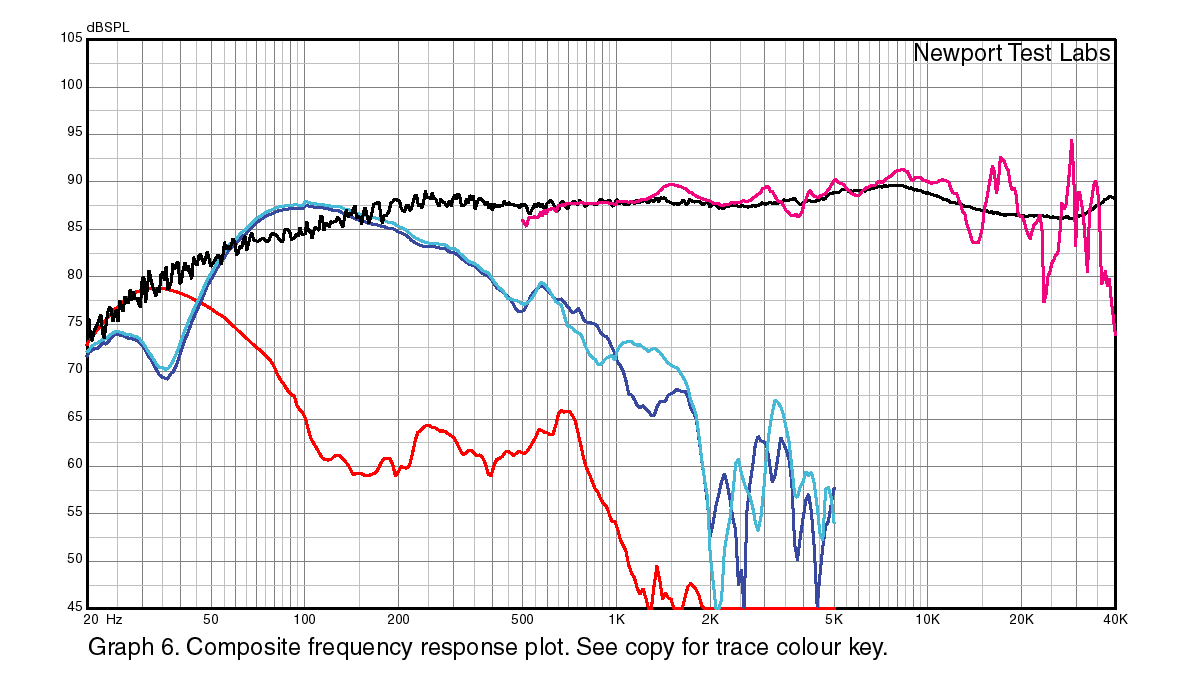What Hi-Fi? Verdict
For better or worse, the Premier 800F delivers incredibly accurate audio with monitor-like precisions, thanks in part to a host of new technical breakthroughs that Paradigm has integrated into this stylish floorstander.
Pros
- +
Superb sound
- +
Super-accurate delivery
- +
Easy to driver
Cons
- -
Stability could be better
- -
Plastic terminal post knobs
Why you can trust What Hi-Fi?
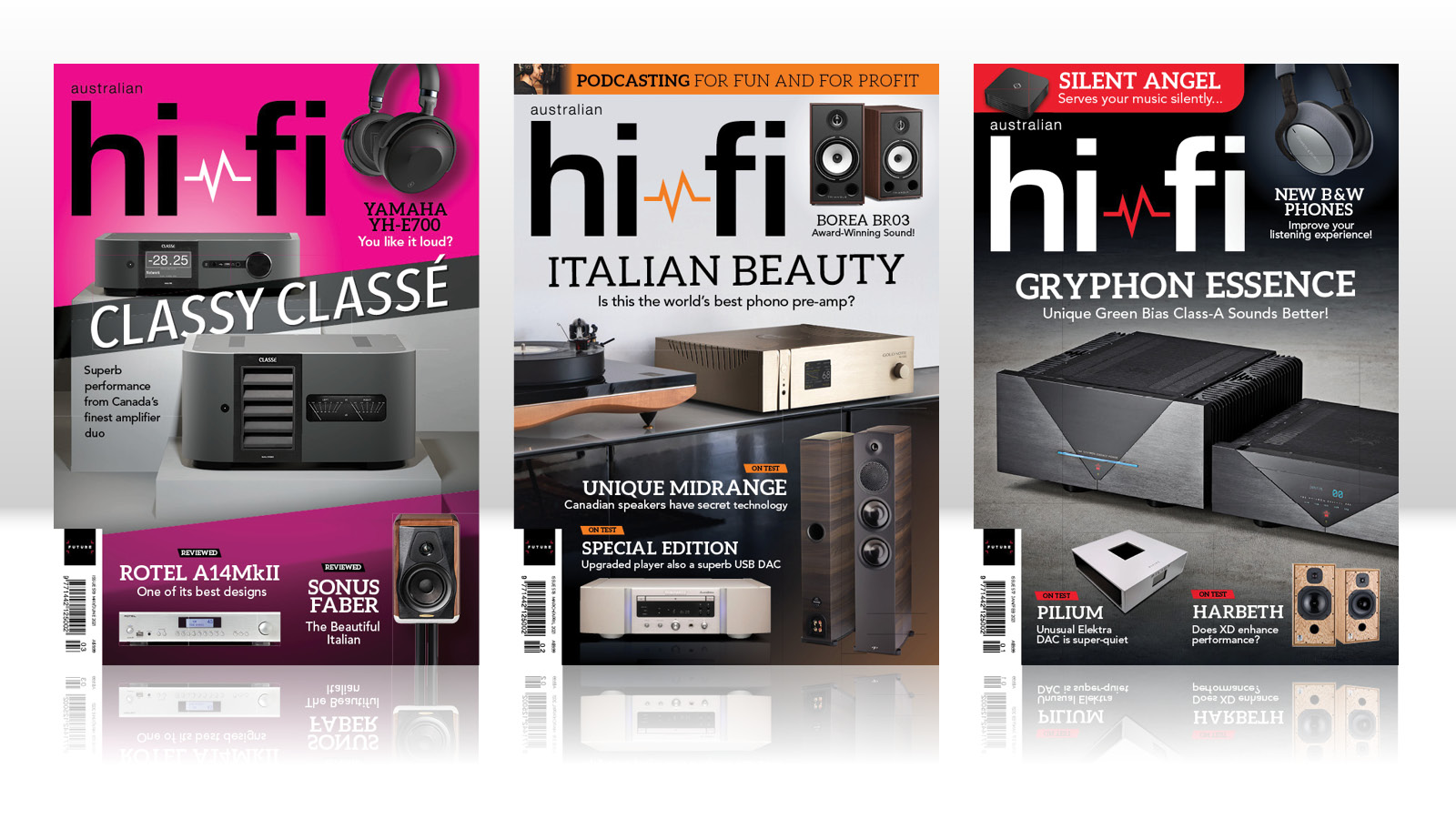
This review and test originally appeared in Australian Hi-Fi magazine, one of What Hi-Fi?’s sister titles from Down Under. Click here for more information about Australian Hi-Fi, including links to buy individual digital editions and details on how to subscribe.
Famous Canadian loudspeaker manufacturer has developed some extraordinary technologies over the years, and its Paradigm Premier 800F is a perfect example. The company has really thrown all its recent technological break-throughs into this four-driver, three-way floor-standing design.
Equipment
The most obvious of those technologies sits in front of the Premier 800F’s 165mm-diameter midrange driver, which has a carbon-infused polypropylene cone with a Thiele/Small diameter of 130mm. In front of it is what Paradigm calls a patented ‘Perforated Phase-Aligning’ (PPA) lens, which it says “increases and smooths its output without colouring the sound”.
The idea of putting a dispersion/phase-alignment device in front of a driver is not a new idea – loudspeaker manufacturers have been putting them in front of tweeters for more than half-a-century, and indeed Paradigm has fitted one to the tweeter on the Premier 800F. But putting one in front of a midrange driver is, while not without precedent, relatively rare. How might such a ‘lens’ “increase and smooth” the output of a midrange driver?
One reason is fairly obvious. In any ‘cone’ loudspeaker, the cone moves inwards and outwards in pistonic fashion to produce sound. So if the centre of the cone moves forwards and backwards one millimetre, the outside edge of the cone, where it joins with the roll surround, will also move forwards and backwards by one millimetre.
But because sound waves are quite short (a 4kHz sound wave is 11cm long) this means that the sound wave created at the centre of the cone will be slightly out of phase with the same sound wave that’s being created at the cone edge, and when the waves combine further in front of the driver there will be interference that will cause frequency response variations – increases when the sound waves are in-phase and decreases when they’re out-of-phase.
Essentially what Paradigm is doing with its PPA lens is trying to minimise the deleterious sound-wave interactions while at the same time maximising the useful interactions. I say ‘trying to minimise’ because to do this perfectly, you’d need a slightly different PPA for every frequency the driver is capable of reproducing.
Now take a close look at the roll surrounds of the two bass drivers. Instead of being a smoothly curved piece of material (manufacturers use various materials, including rubber, cloth, foam, thermoplastic, etc), the roll surround of the 800F’s bass driver is both ridged and curved, in a process Paradigm calls ‘Active Ridge Technology, or ‘ART’.
The latest hi-fi, home cinema and tech news, reviews, buying advice and deals, direct to your inbox.
Paradigm says these corrugations enable much greater driver excursion than a standard profile surround and they also enable a driver to deliver higher sound pressure levels for the same input voltage, and with less distortion. Indeed Paradigm says the differences can be quantified as “an astounding, measurable 3dBSPL gain in output and a 50 per cent reduction in distortion”.
Also, rather than gluing this surround to the cone, Paradigm ‘overmoulds’ the surround onto the cone, which provides a much stronger bond.Paradigm has been granted two US patents for its Active Ridge Technology, which was invented by Paradigm researchers Oleg Bogdanov and Kevin Stitt.
One of these patents covers the ornamental design of the surround, while the other describes the function of the profile (in part) as “having a cross-sectional profile that varies continuously between each peak and adjacent trough so as to substantially eliminate unwanted stress-induced deformation during displacement of the diaphragm suspension when in use”.
As for the cones themselves, they’re formed from carbon-infused polypropylene, have dish-shaped dust caps and a Thiele/Small diameter of 130mm for an effective cone area (Sd) of 133cm², so the total for both drivers would be roughly equivalent to that of a single driver with an overall diameter of 203mm.
The tweeter in the Premier 800F has a 25mm pure-aluminium dome which also benefits from being fronted by a PPA lens. It has a neodymium magnet fitted with external heat-sinking and the voice-coil gap is filled with ferro-fluid for improved efficiency, damping and cooling.
Rather unusually, the tweeter is fitted not to the cabinet but to the ABS facade that not only covers the entire front baffle but is also used to form the PPA lens in front of the midrange driver.
Paradigm has positioned the fairly large (77mm diameter) bass-reflex port that augments the bass output of the Premier 800F on the rear of the speaker, so pushing the cabinet up against a rear wall would not be advisable.
Unusually, but rather sensibly, the inner end of the port has an acoustically transparent cloth stretched across it that lets sound through, but keeps small beasties out. (Speaker cabinets are quite warm inside, because of the heat created by the drivers and the internal baffling material, which is a bit like a doona.)
The rear panel is also home to the four speaker terminals, which allow bi-wiring or bi-amping. The terminals and the buss-bars that link them are high-quality multi-way gold-plated types, though the clear plastic knobs on the posts are not of the same quality.
As you can probably tell from the photographs, the Premier 800F is a tall speaker, measuring 1053 x 230 x 350mm (HWD). Paradigm has used ‘outrigger’ feet to increase the size of the cabinet’s footprint, but even with these fitted I found that it was still fairly easy to tip over a cabinet. You could improve stability by using the supplied screw threads on the feet to attach a wider outrigger base, rather than screwing in the supplied spikes or rubber feet.
The company uses angular side panels on the cabinet to get the visual and acoustic advantages of curved cabinets without actually physically curving them. The pair of loudspeakers I was loaned for review speakers were finished with Paradigm’s new ‘Espresso Grain’ finish.
You would be best advised to judge this finish in the flesh for yourself. Although it’s a nice enough finish I wasn’t a huge fan of it, so I’d personally opt for one of the other two finishes that are available: gloss white and gloss black.
As for where the 800F speakers are manufactured, you will be pleased to hear that in a world where even the highest-end loudspeakers are now being manufactured in China, all Paradigm’s Premier Series speakers are designed, engineered, and manufactured in Canada.
Performance
I have to say it. The first thing that leaps out at you when listening to Paradigm’s Premier 800Fs is that nothing leaps out at you.
Yes, the bass is great – taut, controlled and depthy, whether you’re listening to a jazz trio, a rock band or an orchestra. Yes, the midrange is beautifully natural, whether it’s reproducing vocalists or instruments. And yes, the high frequencies are gloriously extended to beyond the upper limits of human hearing and, on that journey, the clarity of the sound and the silky-smoothness are outstanding.
But you don’t really hear any of this, because the overall frequency balance is so perfect that all this great sound at the different frequencies is just… well, great sound right across the board. More importantly, it’s a perfectly natural sound.
The authenticity of the 800F’s bass response was perfectly demonstrated to me as I listened to the wonderfully-named Flight of the Cosmic Hippo album by Béla Fleck and the Flecktones. On the title track, listen to Victor Wooten absolutely paste his bass lines into the song’s structure.
Listen to the entire album and you’ll hear how effortlessly the Paradigms reveal which of his 4-string, 5-string and 6-string basses he’s playing. As for their version of Michelle (Lennon/McCartney), it’s simply sublime.
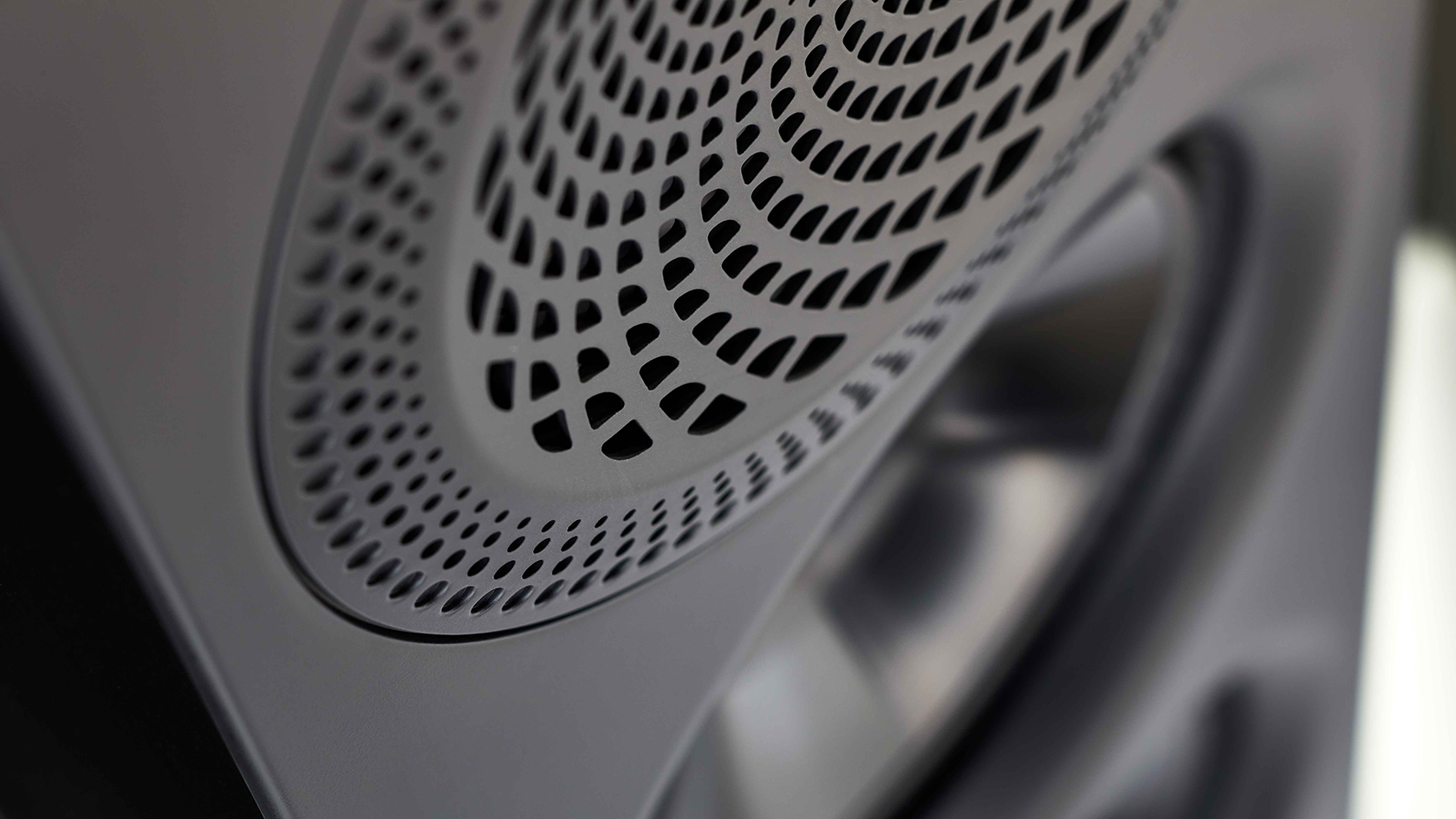
There’s also plenty of low bass to admire on Crooked Still’s Shaken By a Low Sound, but I listened to it to enjoy the beautifully recorded sound of all the instruments on the album as well as the achingly delicate voice of Aoife O’Donovan.
This album will demonstrate to you the unerring accuracy of the Premier 800F’s midrange reproduction. Just listen to Greg Liszt’s banjo, Rushad Eggleston’s cello and Casey Driessen’s five-string violin. But the star of the sonic show is undoubtedly O’Donovan’s pipes.
One of my go-to albums for testing treble is Steely Dan’s Can’t Buy a Thrill, from 1972. On Do It Again the different sounds and textures of the congas, cymbals, finger-cymbals, electric piano and guiro make for a true tweeter-tester, and the Paradigm 800F’s tweeters were more than up for it. And if you think the Paradigms are making the guitar solo sound weird, they’re not: You’re listening to an electric sitar, played by Denny Dias.
You will need to angle these speakers in a little, so they’re aimed either directly at the listening position, or so that the acoustic paths cross just in front of it, and you don’t want to be sitting too close to them. But apart from this, they’re remarkably forgiving of where you put them in your room, so long as you leave at least 20–30cm of space at the back for those rear-firing ports to do their stuff.
Final verdict
The Paradigm Premier 800F is one of those rare loudspeaker designs that delivers monitor-like sonic accuracy.
If you’ve become accustomed to hearing over-egged bass, or speakers that deliver a peaky, forward midrange to impress inexperienced listeners, or treble that’s either rolled off to imitate smoothness, or artificially elevated to give it a bit of a tizz, you may well be a little underwhelmed when you first listen to a pair.
But once you’ve spent a little quality listening time with them, preferably with your favourite albums (rather than those in the dealer’s demo collection), you will soon appreciate that the Paradigm Premier 800Fs are doing exactly what a good pair of speakers should do – which is to tell it like it is. Highly recommended!
In-depth lab test results
Graph 1 shows the in-room frequency response of the Paradigm Premier 800F, measured by Newport Test Labs using pink noise as the test stimulus. The response is very, very flat. If you look at the 90dBSPL graphing line together with the 87.5dBSPL line just below it, you can see that the 800F’s response is essentially contained in the space between these two lines from around 140Hz all the way up to 40kHz. That’s 140Hz to 40kHz ±1.25dB! So from the upper bass, right across the midrange and up to inaudibility the 800F is within ±1.25dB.
In Graph 2, Newport Test Labs has measured the high-frequency response of the Paradigm Premier 800F using a gating technique that allows 1Hz resolution, and this time running the same test with the speaker grille fitted (red trace) and without it (black trace).
The increased resolution of this graph shows peaks and dips that are ‘ironed out’ by the pink noise test used for Graph 1. Although Graph 2 shows the actual high-frequency response, these peaks and dips would not be perceived by the human ear, which would ‘hear’ the response shown in Graph 1. Some of the peaks and dips are also artefacts caused by the use of a single microphone, whereas when listening, signals arrive at two different points.
The grille is essentially acoustically transparent below 5kHz, but above this, the overall level is around 2dB lower than if the grille is not used, at least out to around 14kHz after which the two traces basically re-align themselves. This means that the grille essentially removes the slightly shelved ‘lift’ in the response between 6kHz and 13kHz when the grille isn’t fitted.
The result of this is that I suspect most listeners will prefer the sound balance of the 800F when the grille is fitted. If you prefer a slightly ‘brighter’ high-frequency sound, you could listen with the grilles removed. However, your hearing would need to be very acute to perceive a 2dB difference in this high-frequency region.
Graph 3 shows the nearfield response of both of the Paradigm 800F’s bass drivers (the black and green traces) and that of the bass reflex port (red trace). You can see that the cabinet is tuned for a very low 35Hz, so you could expect some serious bass extension from this design. The output of the port is controlled, but you can see some general ‘leakage’ of higher frequencies from 100Hz right out to around 900Hz.
Paradigm doesn’t actually state the impedance of the 800F design, simply claiming that it is ‘compatible with 8Ω’ presumably to obscure the fact that its impedance is only 8Ω or higher for a very brief frequency span between 1.6kHz and 5.5kHz and is less than 6Ω between 75Hz and 1.3kHz and also between 7kHz and 30kHz. It drops down to around 3.2Ω at 130Hz.
According to the International Electrotechnical Committee (IEC) guidelines, the Premier 800F would attract a ‘nominal’ impedance rating of 4Ω. This impedance is shown in Graph 4 as the red trace. Phase angle (blue trace) is benign such that at its most difficult (–45°) point, impedance is a healthy 7Ω. I think you will get best performance from the 800Fs if you use an amplifier that will happily drive very low impedances, preferably down to 2Ω.
In Graph 5, Newport Test Labs has spliced the three-metre in-room frequency response to the gated one-metre on-axis response at 700Hz to arrive at a composite response. As the IEC allows us to disregard high-Q discontinuities, you can see that the overall measured response is 45Hz to 23kHz ±3dB, which is so close to Paradigm’s own specification of 43Hz–25kHz ±3dB that we’re in the realm of measurement error. And if you stretch the dB envelope out by just two decibels, the 800F measures 35Hz to 35kHz ±4dB.
Newport Test Labs has created another composite graph (Graph 6) via post-processing to show the ‘fit’ for the various different measurement techniques used by the lab. You can see how the high-frequency in-room pink noise trace (black) is a smoother version of the one obtained using the high-resolution gated technique (pink trace), the black trace being the response that would be perceived by the human ear.
The pink trace shown is the one without the grille: attaching the grille would reduce the level slightly between 6kHz and 14kHz (approx). The light blue and dark blue traces are the response of the two bass drivers and the red trace the output of the bass reflex port. You can see the reason for the 800F’s excellent low-frequency performance.
The efficiency of the Paradigm 800F was measured using Newport Test Labs’ usual rather stringent test methodology, under which it obtained a test result of 88.5dBSPL at one metre for a 2.83Veq input.
This matches very well with one of Paradigm’s claimed two specifications for this parameter – 89dBSPL (anechoic). It means the Paradigm 800F is more efficient than most floor-standing designs, so will make the most of whatever amplifier power you have available.
Paradigm’s Canadian engineers have excelled themselves with their Premier 800F. The frequency response is incredibly flat and extended at both ends of the audio spectrum, there is no spectral skew and it’s also very efficient loudspeaker. It’s an outstandingly good design.
Australian Hi-Fi is one of What Hi-Fi?’s sister titles from Down Under and Australia’s longest-running and most successful hi-fi magazines, having been in continuous publication since 1969. Now edited by What Hi-Fi?'s Becky Roberts, every issue is packed with authoritative reviews of hi-fi equipment ranging from portables to state-of-the-art audiophile systems (and everything in between), information on new product launches, and ‘how-to’ articles to help you get the best quality sound for your home.
Click here for more information about Australian Hi-Fi, including links to buy individual digital editions and details on how best to subscribe.
